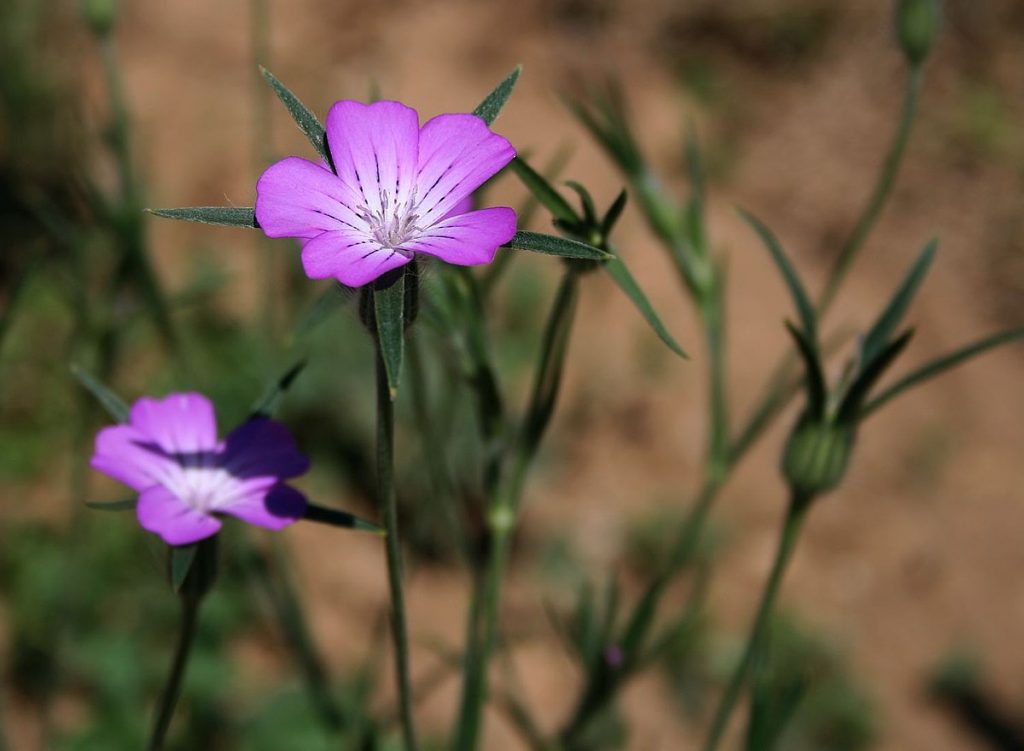
Corncockle is an upright annual belonging to the carnation family, Caryophyllaceae, that also includes pinks, baby’s breath, and campion. It is native to Europe where it grows in disturbed sites such as fields and roadsides but is now wide spread in North America. It was considered a weed of wheat fields until the twentieth century when agricultural practices changed and it is now cultivated as an ornamental. Photo Credit Franz Xaver Wikimedia Commons
Description: The plant grows 1-3′ tall and has a simple sparsely branched stem with gray-green, opposite leaves that are 3-5″ long, narrowly lanceolate and carried upright close to the stem. Both the stem and leaves are covered with silky white hairs. The 5-petaled flowers are trumpet-shaped, magenta with black striping, and about one to two inches across. In summer, they appear singly at the ends of stiff stems that sway gently in the breeze and are subtended by narrow sepals that are longer than the petals. The light brown seed capsules open by 5 teeth and release many small pitted black seeds. Plants readily self-sow.
Poisonous Properties: All parts of the plant are poisonous but the seeds are especially high in toxic compounds. The seeds cause problems when they contaminate grain eaten by livestock or humans when eating bread made with contaminated wheat grains. The toxicity is due to the presence of soap-like colloidal glycosides called saponins, particularly githagenin and agrostemmic acid. Eating contaminated grain can cause chronic symptoms including listlessness, weight loss, digestive problems, weakness and eventually death if the diet is not changed. Acute symptoms include severe stomach pain, vomiting, diarrhea, weakness, dizziness, respiratory depression, and breakdown of red blood cells. Acute poisoning is rare in humans because highly contaminated flour is gray and bitter tasting, and the heat of baking bread made with contaminated flour reduces the impact of the toxins.